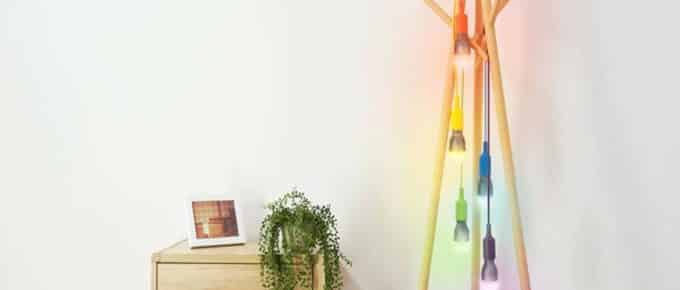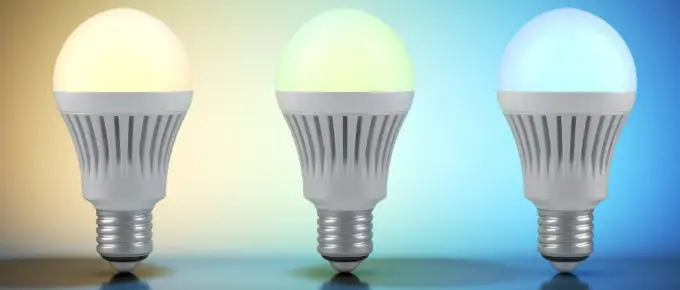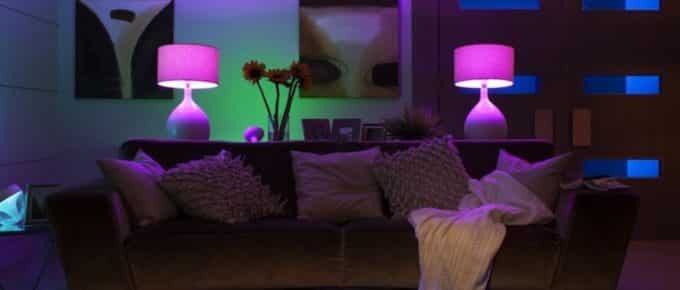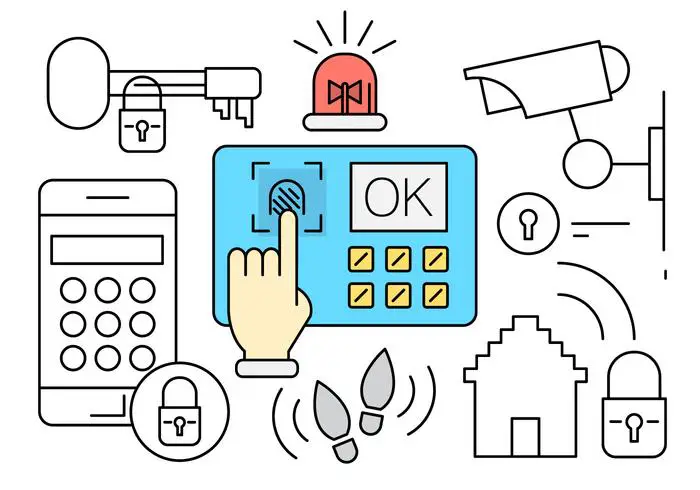Smart lighting systems can make your home more exciting and colorful. With the new customizing features of smart lighting, you can easily show your creativity through a variety of color options. Two of the best smart lighting systems present in the market are NanoLeaf and LIFX Tile.
After testing both the products for a week, we have found out all their features. Both products are equally good but they have several differences that you can see below and then choose the one that suits your home.
Our Verdict
Quick Navigation
Both the products have several benefits as well as some drawbacks. It is very difficult to pick anyone between them. Their installation process differs which can be a determining factor in choosing the best one between them. If you already have LIFX bulbs then LIFX Tile would be very easy to install but if you are a newcomer in buying the lighting system, it can be a bit difficult for you. The new square NanoLeaf panels that are going to release this year would offer new features like extending 1000 panels, embedded music sync app, motion controls, a new touch interface, and support for third-party. It would surely bring Nano leaf above LIFX Tile so be ready for it. On the whole, we would suggest going for Nano leaf if you want a smart light that is easy to use and comes with fabulous features.
Nano Leaf Vs. LIFX Tile: Comparison Chart
| Specifications | Nano Leaf | LIFX Tile |
|---|---|---|
| Lumens | 100 Lm./panel | 420 Lm./panel |
| Watt | 0.5-2 W | 6.8W |
| Color range | 16.7 million colors | 16 million colors |
| Voltage range | AC 100-240V 50/60 Hz | AC 100-240V 50/60 Hz |
| App | iOS 9+, Android 4.1+ | iOS 9+, Android 4.1+ Windows 10 |
| Color temperature | 1,200K-6,500K | 2,500K-9,000K |
| Zones | 1 color per panel | 64 zones per tile |
| Google Assistant, Amazon Alexa, Apple Homekit, IFTTT | Yes | Yes |
| Single unit weight | 0.5 lbs | 1.31 lbs |
| Warranty period | 2 years | 2 years |
| Music | Via Rhythm module | Via phone’s music |
| Scalability | Up to 30 | Up to 10 |
| Internet requirements | 2.4 GHZ 802.11B/G/N | 2.4 GHZ 802.11B/G/N |
| Dimensions | 24 cm | 20 * 20 cm |
| Price | Check Price | Check Price |
Differences
1. Design
Both lighting systems are different in designs that make them unique in their way. The LIFX Tiles are thicker than NanoLeaf panels. NanoLeaf panels are one inch deep that is very thin. It fits easily into the wall. LIFX Tile are slightly protruding out.
It depends on you what kind of design you prefer for your home lighting system. The difference in their design gives you options to choose from.
2. Scalability
NanoLeaf base station supports up to 30 tiles which is a lot as compared to LIFX that supports only 10 tiles. With the large scalability, NanoLeaf offers you a wide range of options to set your home lighting the way you like. This is one factor where Nano Leaf gets above LIFX Tile.3. Number Of Zones
In terms of zones, LIFX Tiles offers much more options with 8*8 grids of customizable “light zones”. With these light zones, you can easily get access to limitless color customization options. With the help of a digital mockup on the LIFX app, you can even bring the tiles together and paint them the way you like. It has a total of 64 different lighting points to make adjustments in every tile. In total, it offers you a wide range of zones and colorful options to make your creativity with lighting go to the next level.
NanoLeaf is yet to come up with such smart features. It offers only one color per tile. This is where LIFX gets an edge.
4. Turns Music Into Light
Both these smart lighting have the feature to sync music with lights and make them change colors and textures according to the music. However, their system of using this feature differs. LIFX Tile needs to be connected to your smartphone and you will have to switch on the microphone so that it can catch the music and then change the lighting accordingly. With NanoLeaf, you do not have to switch on your microphone as it uses a Rhythm module which connects directly to the base station and change the lighting. Nano Leaf gets an upper hand in this feature as it makes the syncing of music hassle-free and you don’t have to stay near the music with your microphone on to catch the music.
But you have to buy the Rhythm module separately with NanoLeaf to enjoy this feature that can add to your expense.
5. Connectivity
Both devices are connected to Wi-Fi differently. NanoLeaf uses the Base station to connect its tiles to Wi-Fi for enabling add one like Rhythm module while LIFX Tile has in-built Wi-Fi in each of its panels which is a better facility than NanoLeaf.
6. Installation
The installation processes of both lighting systems differ. Installing LIFX Tile is easier than NanoLeaf. The LIFX Tile is more flexible as it can be easily installed through cables that are very common in the market and they already exist in your house. To install NanoLeaf, you have to get the double-ended chips that slide into the sections on the back of their panel. LIFX is easy to install in terms of layout also. NanoLeaf has a difficult layout with 3 panels that can make it difficult to install.
Similarities
1. Voice Control Compatibility
Both devices have one great advantage that is their compatibility with all the voice assistants like Amazon Alexa, Google Assistant, and Apple’s Siri. This feature would let you control your smart lighting system through your voice easily from any part of your home. They both are also compatible with IFTTT that can help these devices easily connect with the smart devices present in the home integrating it into your smart home system.
2. Change Shape Of Your Light
Both lighting systems are flexible enough to be changed into any shape you want them to be using the mounting tape to set their tiles. You can easily set any of these two lighting systems in your desired shape.
Features And Technical Specifications Of NanoLeaf
- Can work on both iOS and Android devices
- Has the Rhythm Module system that can sync music with your lighting tiles
- Offers more than 16 million colors
- You can easily control it through Wi-Fi and no hub is required
- Its installation is drill-free and simple.
- Wattage is 2W/240V
- It is also compatible with Nest and Logitech
- Has a sunrise effect
- Its ambiance and white and color
- Available in white color
- Weight is 1.8kg
- It does not require any batteries
- Average life is 20000 hours
- It is made of plastic material
- It offers 2 years warranty
- Items in the box:9 RGBW Smart LED Panels, 9 Mounting Stencils, 28 Mounting Strips, 1 Power Supply Unit, 1 Controller Unit, 9 Panel Connectors
Features And Technical Specifications Of LIFX Tile
- Can work on both iOS and Android devices
- It offers 16 million colors
- Wattage is 34 watts at full brightness
- LED life-span is 22 years
- Its voltage range is AC 100-240V 50/60 Hz
- Software dimming is between 1% – 100%
- It offers 5 tiles per set
- Offers 10 blended light zones per beam and 60 blended light zones per kit
- It offers 64 color zones in every tile
- Microsoft Cortana compatible
- Has WPA and WPA2 security
- It offers a 2 years warranty
- Items in the box:1 LIFX Starter Kit, 1 Guide Book
Additional Accessories
There are several accessories that both the products offer to enhance their function.
NanoLeaf
- 12-sided remote
- Mounting accessories
LIFX Tile
- Nano Leaf 12-sided remote control can be used for it
- Extra colorful tiles
FAQ’s
1. Can I install my LIFX Tile on a ceiling? Will its installation be easy?
There is a 3 M adhesive that binds the light to the surface but it would be advisable if you avoid installing your smart lighting on the ceiling. It will be a safer option for you. Try to discuss your lighting installation plan to the professionals before you take any such step so that you get their expert opinion on this issue.
2. Is the internet connection required to control the LIFX lighting system?
You do not necessarily need an internet connection to switch on/off your LIFX lights. It can be done through the switches too. But you will need a proper Wi-Fi connection to change the colors or enjoy other features.
3. How big is each panel in the NanoLeaf lighting system?
The panels of the NanoLeaf lighting system are triangular and their dimensions are 24 cm or 9.45″ on each side.
4. Can we NanoLeaf lights outside our home?
NanoLeaf is not recommended to be installed outside because of its screen and lighting system. It would be better if you do not use it outdoors. But if you want to have it outdoor, you can cover them to protect from moisture and then it can work.
5. How do we attach NanoLeaf to the wall?
The NanoLeaf lights come with the 3 M Command strips that are used to install this device. Its installation is not very easy and can require a professional to do the task.
Bottom Line
We hope that you found the best one for you between the products. We assure you that both of these products would add new color combinations and lots of excitement to your house. The only thing you need to be careful about is matching your needs with the product for a worthy purchase. Apart from nano leaf, do check out a great comparison between TP link and LIFX
Nanoleaf Rhythm Edition Smarter Kit - Editor's Choice
Summary
NanoLeaf base station supports up to 30 tiles which is a lot as compared to LIFX that supports only 10 tiles. With the large scalability, You can easily control it through Wi-Fi and no hub is required. Its installation is drill-free and simple.Wattage is 2W/240V. It is also compatible with Nest and Logitech. Has a sunrise effect. Its ambiance and white and color. Available in white color. Weight is 1.8kg. It does not require any batteries.







Leave a Reply